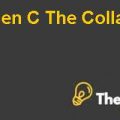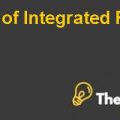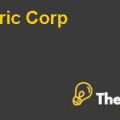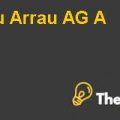
Introduction
Indalex Limited (Independent Aluminum Extruders) was established during the year 1961 and its incorporation was led by the trend of offering aluminum fabrication and extrusion services by independent small companies. Indalex Ltd was a 100% owned subsidiary of Pillar Holdings Ltd. Since its inception, Indalex Ltd.’s prime focus was on the providing of high finishing quality of aluminum surface-finish to the UK market and for ensuring the highest quality of finished products and improved services to its customers through qualified and well trained workforce. Indalex Ltd practically started serving the UK market from the year 1962 and it focused on high complexity of difficult production sections, which allowed Indalex to charge higher prices than the market norms, which led Indalex to enjoy profitability since 1962. Indalex was the first company that installed its own anodizing plant in the year 1964 and this anodizing plant gave it a differentiating position in the UK market because this plant enabled Indalex to apply surface-finish on aluminum extrusion produced by its own plant.
This addition to Indalex production facility and the offering of two services from one window of Indalex, made it an attractive supplier for the companies who were involved in the construction of homes and buildings. Further, the Indalex’s highly skilled technical staff developed different new designs for products in anodizing plant that led its anodizing plant to be known as a more efficient plant among other plants installed in the UK market. After the successful addition of anodizing plant, the Indalex took another step in the expansion of its production processes and it added new extrusion pressing facility into its production process in the year 1969. However, the production capacity of its anodizing plant improved faster than the production capacity of extrusion and this vast increase in anodizing capacity made it the largest anodizing provider in the UK with its four anodizing facilities operated in the UK market.
Since Pillar Holding, parent company, had owned several independent companies, hence, the management of Indalex was also operating as a profit center and it operated with full autonomy regarding the purchase of inputs and capital equipment. In 1970, Pillar holding was acquired by RTZ group, however, it did not affect the operations of Indalex but Pillar group required each of its subsidiary companies to prepare a five year profit projection plan that would meet the target of achieving annual growth of 10% in pre-tax profits. Therefore, Indalex was also required to prepare a five year projected income statement in order to ensure that the targeted pre-tax profits are achieved.
Problem Statement
Indalex Ltd.’s current production capacity is not sufficient to meet the future demand of Aluminum Extrusion, meanwhile, the managing director, Peter Mellwraith, is concerned about the future economic condition of the market in which it operates.
Analysis
Q1.) Given a business plan that forecasts a total tonnage in 1983 about 50% higher than 1977 (see exhibit 6a), and no major changes in product mix, prepare a capacity expansion plan for 1978 - 1980. Please be specific regarding the order in which you expand the different processes, and when each capacity addition should be expected to become operational.
Currently, Indalex is operating at a 95% capacity and is producing 9000 tons of Aluminum extrusions using the 13800 tons of total billet (9300 tons of prime billet and 4500 tons of secondary re-melt billets). However, the market demand for aluminum extrusion is around 12000 tons, which creates a gap of 3000 ton aluminum extrusion and since the finished product of extrusion presses (mill finish) would be reprocessed at the next step in the surface finishing process, however, only 55% of the mill finish is further processed in anodizing plant and rest of the 45% is sold outside the business as raw mill finish product. In addition to this, during the course extrusion press, 35% of the total input billet is scraped which is treated separately.
However, in order to fill the demand and production gap for aluminum extrusion, additional investment in new extrusion presses needs to be made which will cost around $1 million and would generate additional production capacity of 3000 tons of aluminum extrusion. Further, considering the business plan presented in an exhibit 6b, that projects the scrap generated through the extrusion process, a production plan for three of the processes have been prepared. According to this projected production plan, the Indalex will produce 871 tons of extrusion during the year 1978 and 1979, hence, production at this level would mean that the major percentage of 3000 tons of additional capacity would remain unutilized. However, the additional extrusion plant would generate a positive contribution of $275,160 during the period 1978 to 1980.
Additionally, when the extrusion plant would generate additional tons of extrusion, the additional extrusion would have to be processed in.......................
This is just a sample partial case solution. Please place the order on the website to order your own originally done case solution.










